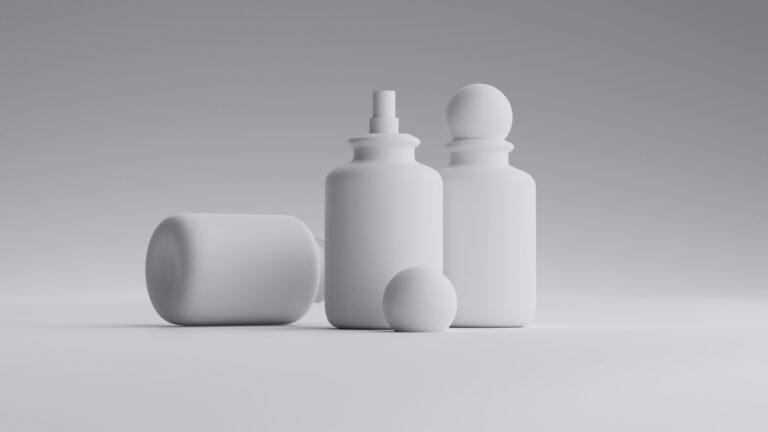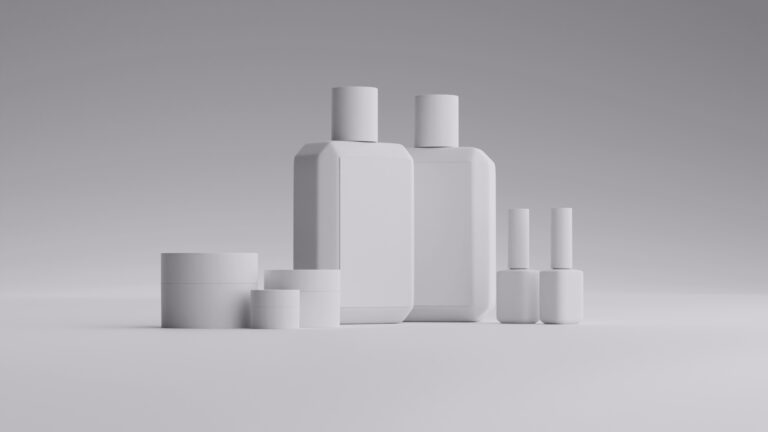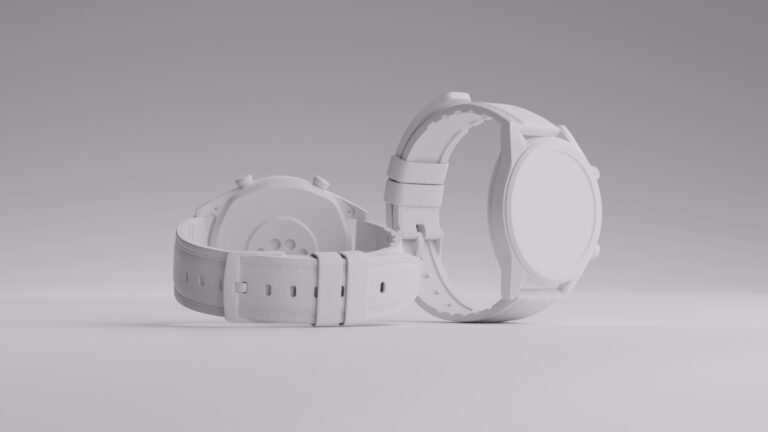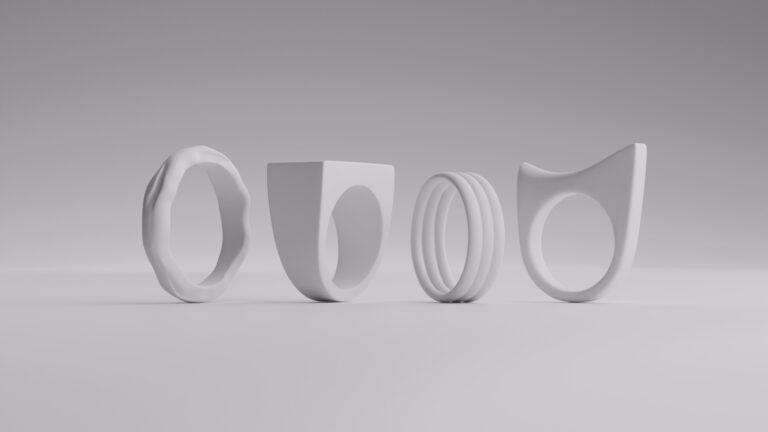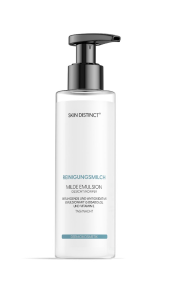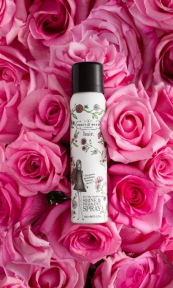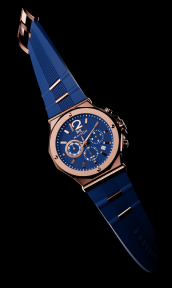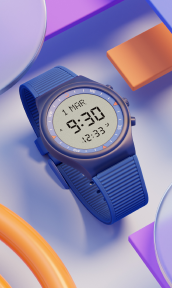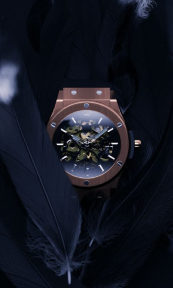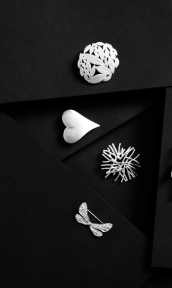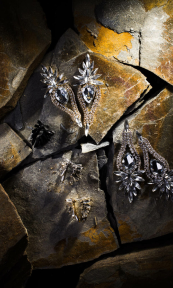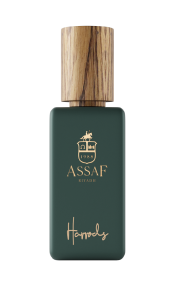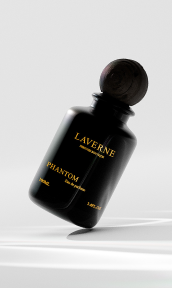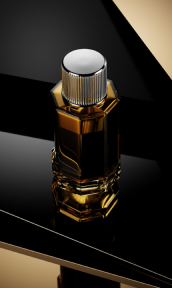I. Importance of jewelry product photography
If you currently work in the jewelry e-commerce space, you know that selling your products has become a real race. In the fast-paced world of e-commerce, jewelry stores face stiff competition for the attention and trust of potential customers, it’s all about who can attract people faster. With so many options at their fingertips, consumers today rely heavily on high-quality product photography to make informed purchasing decisions.
In today’s digital era, where online shopping has become the predominant mode of commerce, the utilization of exceptional imagery is imperative in conveying the authentic essence and appeal of jewelry. Brands that want to stand out from the crowd and leave a lasting impression on discerning shoppers can use professional product photography of jewelry, showcasing intricate details and craftsmanship.
But how exactly can you win this “race” for clients? Well, you definitely have to improve your imagery, and this is precisely why we’re here today! So, grab a coffee, take a seat, and spend your next few minutes with us, and we’ll teach you all you need to know (and more) about creating your own jewelry product photography.
II. Essential equipment and setup

A. Camera and lens
It’s common knowledge by now that choosing the right camera is of the utmost importance step in jewelry photography. The camera you choose will have a major impact on the quality and clarity of your images, allowing you to present your jewelry products in the best possible light. There are several factors to consider when making this decision.
First, resolution is critical. Jewelry contains intricate details that must be captured accurately. Therefore, opt for a camera with a high megapixel count. This will ensure that every nuance and facet of your jewelry is faithfully reproduced in the photos. To capture sharp images without blurring or distortion, look for cameras with excellent autofocus capabilities. In our experience, DSLR cameras are best for this task and allow you to create flawless jewelry images.
Another important aspect is the lens. To capture the intricate details of any piece of jewelry, it’s important to have the right lenses available. A recommended option for capturing jewelry details is a macro lens. Due to its close-up capabilities and high magnification power, a macro lens enables one to observe the delicate texture of gemstones, the intricate etchings on metal surfaces, and even the minute imperfections that give each piece its distinct character.
Furthermore, you can also try a tilt-shift lens. While tilt-shift lenses are primarily used in architectural photography, they can also provide valuable services in jewelry photography. Having the ability to adjust both tilt and shift gives you greater control over depth of field and focus points, resulting in sharp, precisely focused images that highlight even the smallest elements of a piece of jewelry. This is especially useful when photographing rings or earrings, where small features might get lost in an average shot.
B. Lighting
Proper lighting can make all the difference in how a piece of jewelry appears in photographs and ultimately influence a potential buyer’s perception and decision-making process. It is important to consider the color temperature of the light source and the control of reflections and shadows when lighting jewelry.
On the one hand, different types of jewelry require different color temperatures to highlight their best features. Knowing how different light sources affect different materials can help you make beautiful images that show the jewelry you’re taking pictures of. Furthermore, controlling reflections and shadows is just as important in jewelry product photography. Jewelry often has reflective surfaces that can create unwanted shadows if not handled properly.
There are several types of lighting equipment that professional photographers use to take stunning pictures of jewelry. The soft box lighting method uses one or more soft boxes to create a diffused light that minimizes harsh shadows and glare on reflective surfaces. Another effective lighting method for jewelry photography is the use of a light tent or light box. This involves putting the jewelry in a box or tent and placing the lights on the outside of it.
This creates an even, diffused light from all directions that prevents unwanted shadows or reflections. Photographers often use macro ring flashes or LED ring lights to take pictures of small jewelry, such as earrings or rings. These small lights are made for taking close-up pictures. They give even light without making the subject look shadowy.
The right balance of light and shadow in product photography of jewelry is important to bring out the beauty and complexity of the jewelry. One way to achieve this balance is with diffused lighting. By using soft boxes or diffusers, you can create soft, even light that brings out detail without creating harsh shadows. Experiment with different angles and positions of your lighting setup to find what works best for each piece.
C. Background and props
Now we’re onto our favorite part, backdrops and props. Choose backgrounds that highlight the appeal of the jewelry without taking over the scene. A simple and clean background can do wonders by highlighting the intricate details and colors of the jewelry. Consider monochromatic backgrounds in neutral tones like white, black, or gray. These colors create a timeless and elegant look that lets the jewelry take center stage. You can also experiment with different textures, like velvet or satin, to add a touch of luxury to your photos.
Props can greatly improve the overall presentation of your jewelry photos. Props can help create a story or context around the jewelry piece while providing visual interest. Make sure to include elements such as flowers, crystals, or other accessories that complement the style and theme of your jewelry collection. However, make sure they don’t overpower or overshadow the main focal point: your jewelry itself.
A consistent aesthetic in your jewelry photography is critical to brand recognition and building a cohesive brand image. It is imperative to consider various factors such as lighting, composition, angles, and editing styles when photographing your products on various platforms. Creating a polished appearance that demonstrates care and skill builds credibility with your clients. Potential buyers will instantly recognize your brand when they come across one of your images on social media or online marketplaces.
III. Preparing the jewelry

A. Cleaning and polishing
These days, presentation is everything. When we talk about showcasing your beautiful jewelry pieces, it’s important to show them in pristine condition. The appearance of an item that is dull can immediately turn off potential buyers and give a negative impression of the item’s quality and value. Therefore, it is important to invest time and effort into cleaning and polishing your jewelry to leave a lasting impression on your customers.
Cleaning and polishing different types of jewelry requires specific methods to achieve optimal results. For gold or gold-plated jewelry, a mild cleaning solution can be used to remove dirt and impurities, followed by gentle polishing with a soft cloth. Silver jewelry can be cleaned with silver polish or by soaking in a sodium bicarbonate solution. Nonetheless, for delicate jewelry adorned with precious gemstones, such as opals or turquoise, it is advisable to refrain from utilizing harsh chemicals and opt for mild soap solutions and gentle brushing.
Cleaning and polishing your jewelry regularly, in addition to keeping it clean, prolongs its life. Carefully cleaning each piece of jewelry not only keeps it looking beautiful but also prevents small scratches from becoming larger ones over time. It is also beneficial to keep your display cases dust-free, as light reflects brilliantly off freshly polished surfaces, giving them a luxurious shine that will catch the eye.
B. Styling and Arrangement
It’s significant to position jewelry in a way that shows it well in photos of products. An essential recommendation is to experiment with various angles and lighting settings to emphasize the distinctive characteristics of each piece of jewelry. It is best to photograph a delicate necklace from an elevated angle to highlight the delicate details and convey a sense of elegance. It is possible to emphasize the boldness of chunkier statement pieces by photographing them straight on or at a slightly low angle.
It is important to create a cohesive and visually appealing composition when putting together several pieces of jewelry. First, consider which color palettes and metallic tones complement each other. Grouping jewelry pieces by style or theme can also create an aesthetically pleasing arrangement. Changing up the sizes and shapes of jewelry when you wear it can really make the look pop. Pairing delicate necklaces with chunky bracelets or stacked rings can really make the whole thing pop.
Pay attention to small details, such as textures, gem cuts, or intricate designs, to make each piece of jewelry unique. Close-up pictures are great for showing the special things that make each piece of jewelry unique. Moreover, use props or backgrounds that enhance the mood or story behind the jewelry, whether it’s an old book for antique pieces or fresh flowers for nature-inspired designs.
C. Handling Reflective Surfaces
When it comes to photographing reflective jewelry, dealing with the reflections and glare that come with it can be a challenge. But if you use certain methods, you can make your jewelry look even better by taking beautiful pictures that show off its true beauty. One effective method is the use of diffusers. To reduce harsh reflections, these translucent materials are placed between the jewelry and the light source. Diffusers come in various forms, such as umbrellas, soft boxes, or even simple white fabric panels held in front of the jewelry.
Moreover, by placing a polarizing filter on your camera lens, you can affect the direction of light waves and selectively block out reflections at certain angles. This technique gives you more control over which areas reflect light and which remain clear and detailed. In addition, adjusting the position of your camera and jewelry can also play a crucial role in minimizing glare. Experimenting with different angles can bring out interesting textures or unique perspectives that would otherwise go unnoticed.
Using techniques like diffusers or polarizers can help you take beautiful pictures of jewelry that reflects light without making it too bright or too reflective. Not only do these tools help improve visual aesthetics, but they also allow potential customers to see every last detail of the item they want before making a purchase decision — a valuable advantage when selling online!
IV. Camera Techniques

A. Manual Mode Settings
The key to capturing the intricate detail and sparkle of jewelry is to set the aperture, shutter speed, and ISO correctly on your camera. When you go manual, you can really play with these settings and come up with images that really showcase the unique charm of each piece of jewelry.
The aperture setting plays an important role in controlling the depth of field of your photos. For jewelry photography, it’s recommended to use a smaller aperture to ensure that all elements are in focus. This way, even the smallest details will be highlighted while the individual components remain sharp. Furthermore, be careful when using a larger aperture, as this can result in a shallow depth of field, and parts of your jewelry may become blurred.
Another important factor is shutter speed—how fast the camera’s shutter opens and closes. Faster shutter speeds are best for capturing sharp images without blur or camera shake caused manually movements or unstable surfaces. Remember, however, that different lighting conditions may require adjustments to achieve optimal results.
Not to be forgotten is the light sensitivity ISO, which allows you to compensate for poor lighting conditions without compromising image quality. Although lower ISO values typically yield more refined images with reduced noise, it may be necessary to augment the ISO for indoor shots or shoots that lack adequate lighting.
B. Focusing and Depth of Field
Focusing on jewelry requires precision and attention to detail. Photographers can ensure that every delicate facet of a gemstone or delicate engraving on a piece of jewelry is captured flawlessly by choosing the right autofocus settings.
Controlling depth of field is another technique that can be used to enhance the visual impact of jewelry photos. By changing the aperture, photographers can create a shallow depth of field that makes certain key elements in the picture stand out while blurring out distracting backgrounds. This technique makes jewelry look more interesting and gives it more depth. It makes it look like it’s three-dimensional and makes it look better overall.
Finally, achieving sharpness and controlling depth of field are essential skills in jewelry product photography. These techniques allow the photographer to capture intricate details with precision while creating visually stunning images that highlight specific elements. Focus and depth of field can really make your photos look better and show how beautiful and complicated each piece of jewelry is.
C. Tripods and Stability
One of the most important advantages of using a tripod for jewelry photography is the ability to achieve perfect focus and sharpness. Due to the tripods sturdy foundation, it is possible to securely set up your shot and adjust the depth of field without any concern about slight camera movement affecting the image quality. Each sparkle of a diamond, every facet of a gemstone, or every metal texture is captured with the utmost clarity, resulting in professional-looking product photos.
To improve the stability and sharpness of your jewelry product photos, follow a few important techniques. First, use a device that lets you release the shutter from far away or a timer on your camera to prevent shaking when you manually press the shutter button. Second, invest in a sturdy tripod with adjustable legs or center columns that allow for precise positioning at various heights and angles. Using additional weights or sandbags to stabilize the tripod can help minimize vibrations caused by external factors such as wind or ground vibrations.
V. Post-Processing and Editing

A. RAW Processing
Shooting in raw format lets you grab all the information from the camera’s sensor without compromising quality or reducing file size, giving you more freedom when retouching. This means you have complete control over important aspects such as exposure, color temperature, and white balance.
The advantages of recording in RAW format are numerous. First, it allows non-destructive editing, preserving the original image quality. You can work with a wide dynamic range with RAW files, which will allow you to properly expose both the highlights and shadow areas of your jewelry. Moreover, shooting in RAW format gives you more latitude in correcting white balance problems and adjusting color tones.
To effectively enhance jewelry images through basic adjustments, there are a few important steps to consider. Adjusting the exposure can bring out the brilliance and detail of gemstones while ensuring an overall balanced image. Second, adjusting white balance is critical to accurately rendering colors, especially important when showing off different metals like gold or silver. Finally, fine-tuning contrast and sharpness can help your jewelry stand out and look more vibrant.
B. Retouching and cleaning up
In jewelry product photography, attention to detail is the key that unlocks all doors. Any imperfection, whether dust particles or tiny scratches, can distract the viewer from appreciating the beauty of the jewelry. While we can easily remove these blemishes with post-processing, it’s important to strike a balance between flawlessness and authenticity.
When removing dust, scratches, and imperfections in post-processing, it is important to exercise restraint. Overzealous editing can inadvertently erase subtle details that make each image unique. Instead of completely removing every speck of dust or scratch, reduce their visibility without compromising the impression of texture and naturalness. In this way, you will create images that are both visually appealing and accurately reflect the gem.
The emphasis on hues and details in jewelry photography is crucial to grab attention and show off the intricate details of each piece, but there’s a fine line between highlighting and overstating. The goal should be to highlight the natural vibrancy without overwhelming the viewer with unrealistic hues. By subtly adjusting saturation and selectively highlighting certain areas through dodging and burning out, you’ll create photos that stay true to reality while highlighting the beauty of your subjects’ craftsmanship.
C. Image resizing and file formats
Image quality is paramount, and it involves not only capturing stunning shots, but also optimizing them for web and print. An important aspect of this process is image resizing. By adjusting the dimensions, you can ensure that the images on your site load quickly without sacrificing their visual appeal. Furthermore, by resizing images, you can ensure a consistent look and feel across different platforms and devices.
In addition to sizing, choosing the right file format is also important in jewelry photography. There are several options available, each with its advantages and disadvantages. For web use, JPEG is often the preferred format due to its small file size and wide compatibility. However, if you want high-quality prints or flexible editing, you should use the TIFF or RAW formats instead. To choose the right file format, you need to know what you want to do with your pictures. Do you want to use them online or for printing?
Ultimately, optimizing images for web and print requires careful consideration of file size versus visual quality in jewelry photography. It’s important to find a happy medium where your images retain their beauty while being suitable for a variety of media. Experimenting with resizing techniques and trying different file formats will help you create captivating jewelry photos that will engage viewers both online and offline.
VI. Optimizing for e-commerce and online platforms

A. Consistency and branding
A consistent look for all images helps create a strong brand identity and allows customers to easily recognize your jewelry. This can be achieved by using the same background, lighting, and editing style for all photos. This way, you create a coherent visual language that tells a story about your brand.
Incorporating brand elements into jewelry photography increases brand recognition and enhances the overall esthetic of your images. Consider subtly suggesting your logo or signature colors through props or backgrounds to add an extra layer of branding. Furthermore, distinctive textures or patterns that embody your brand can aid in establishing a distinct appearance that distinguishes you from your rivals.
Remember that presenting consistency and incorporating brand elements into jewelry photography not only helps create a strong visual identity but also builds customer confidence. When they see a cohesive visual language that is consistently aligned with your brand values, they will be more inclined to view you as reliable and professional. So take the time to create a consistent look for all jewelry images while incorporating brand elements into each photo—an investment that will pay off in recognition and customer loyalty.
B. Thumbnail images and detail shots
Thumbnail images play a crucial role in getting potential customers to click on your jewelry products, they are the hook you must get right. Designing eye-catching thumbnails requires careful consideration of several elements. First and foremost, make sure the image is clear and visually appealing. Use high-quality photography equipment to capture every last detail of your jewelry. You want viewers to immediately take notice of your thumbnail in a sea of options.
Including detailed shots in your product offerings can increase their perceived value and highlight the intricate features of your jewelry designs. By focusing on specific aspects, such as the gemstone setting or intricate metalwork, you provide prospective buyers with a more intimate view of what distinguishes your pieces from other offerings on the market. Not only do these detailed shots add credibility, but they also allow customers to imagine how these stunning intricacies would complement their own style and personality.
So the next time you design a new collection or update your online store, remember the importance of captivating thumbnails by using quality photography equipment and techniques. Don’t hesitate to take detailed shots that highlight the unique features of your jewelry pieces. An appealing visual will undoubtedly attract the attention of potential buyers looking for the perfect piece of jewelry to enrich their lives!
C. Mobile-friendly and responsive design
Given that a significant proportion of online buyers are now accessing the internet via smartphones and tablets, it is imperative to have a website design that is both mobile-friendly and responsive. The challenge is to ensure that product images remain clear and appealing on smaller screens. By optimizing images specifically for mobile devices, jewelry brands can offer users an immersive shopping experience that showcases their exquisite pieces in all their sparkling glory.
An effective way to optimize image load times in jewelry photography is to minimize file size without sacrificing quality. High-resolution product photos are important for conveying the intricate details of each piece of jewelry, but they can also be large files that slow down load times. Compressing images with tools like Adobe Photoshop or other image enhancement software can significantly reduce file size while maintaining visual integrity.
In addition to compressing image files, there are several other tips for optimizing image load times in jewelry photography. One strategy is to implement “lazy loading,” in which images are not loaded until they become visible in the user’s viewport. This technique helps improve page speed by reducing initial load times and allowing users to start browsing content without delay.
Wrapping up
Mastering the art of jewelry product photography is essential for any jewelry brand looking to improve its online presence and increase sales. With the right equipment, lighting techniques and attention to detail, you can capture stunning images that showcase the beauty and craftsmanship of each piece of jewelry.
Recently, however, CGI (Computer-Generated Imagery) has emerged as a superior alternative to traditional photography. CGI allows for limitless creativity and customization, allowing brands to create lifelike images of their products without the need for expensive photo shoots or retouching. In addition, CGI offers cost savings and time efficiencies by eliminating the need for physical prototypes and allowing for quick adjustments and updates as needed. So, what are you still waiting for? Get started towards the best possible visual appearance for your brand now!
FAQ
Why is jewelry product photography important?
Jewelry product photography plays a crucial role in putting your pieces in the best light and attracting potential buyers. High-quality images showcase the intricate details, craftsmanship, and beauty of your jewelry and entice customers to buy.
What equipment do I need for jewelry photography?
You’ll need a DSLR or mirrorless camera, a tripod, various lenses (macro lenses for close-ups), diffused light, a light box or softbox, a background, and editing software such as Adobe Photoshop or Lightroom.
What lighting setup is ideal for jewelry photography?
Soft, diffuse lighting is important to avoid harsh shadows and reflections. This can be achieved with natural light or studio lamps with diffusers. You can also use reflectors to diffuse the light and reduce shadows.




